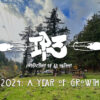|
Getting your Trinity Audio player ready...
|
On January 6th of this year, Congress signed into law Bill S.4439, the Katimiîn and Ameekyáaraam Sacred Lands Act which takes approximately 1,031 acres of specified lands in Siskiyou and Humboldt Counties, so-called California, into trust for the benefit of the Karuk Tribe. Per the new bill, land taken into trust may be used for traditional and customary uses for the benefit of the tribe. In addition to the tribes ceremonial and traditional use, the act has a provision that land taken into trust must allow for continued access by the Forest Service for managing the component of the National Wild and Scenic Rivers System that flows through the land. The Department of Agriculture must enter into a memorandum of understanding with the tribe to establish mutual goals for the protection and enhancement of the river values of such component. Further, the act prohibits gaming on the land taken into trust. In a statement by John Saxon, Executive Director of the Karuk tribe, he states “We never again have to fight federal and state agencies for the right to hold our sacred ceremonies without disturbance at Katimiîn and Ameekyáaraam. Returning our Center of the World protects our inherent responsibility to pass Karuk culture and customs down to the next generation.”
For the Karuk Tribe, the fight for the return of their land goes back to the California Gold Rush, when some 300,000 occupiers flooded the region to extract the land of it’s resources, a practice that exists in many forms to this day. On May 6, 1905, under the authority of the 1891 Forest Reserve Act, President Theodore Roosevelt set aside the Klamath Forest Reserve thereby claiming the entire 1.04 million acre Karuk Aboriginal Territory as public land, leaving the tribe without recognized title to their own land, including 117 recognized villages and associated hunting, gathering, and fishing areas along the middle portion of the Klamath River. This act left the Karuk Tribe without a federally recognized reservation land base, and through the work and diligence of tribal elders since the 1970’s, the tribe was able to purchase and acquire properties in Happy Camp, Orleans, and Yreka, California, much of which is used for tribal housing, ceremonies, and resource management. The KASL Act re-establishes the Karuk Tribe as the steward of these sacred landscapes, reintroducing a variety of sacred spaces where world renewal ceremonies such as the White Deerskin Dance and Jump Dance have taken place since the beginning of time.
For tribes and Indigenous communities across Turtle Island, Bill S.4439 is a reminder that when we remain committed to preserving the dreams of our elders and the traditions of our past, that we can return to a way of life we thrived upon for thousands of years. We know well that acts like these will never erase the traumas of the past and that you can’t really return something that was never theirs to begin with, but for the Karuk Tribes it is a small glimmer of hope that they can return to land practices, ceremonies, and traditions they’ve been waiting on, for themselves and future generations. We also know that while the rest of the colonized world is accustomed to an unsustainable relationship with the land, that Indigenous Knowledge is the only way to preserve the natural environment. That prioritizing Landback in Indigenous and tribal communities is the way towards a sustainable future, and rematriation of land that weaves traditional and cultural knowledge into the mainstream as a sustainable example for the world. Returning Indigenous lands to Indigenous hands is climate and social justice, and is necessary for the healing and transformation of our communities as we fight for liberation of all people and our planet.
#Landback
Nic Sanford Belgard
Indigenous Peoples Power Project









